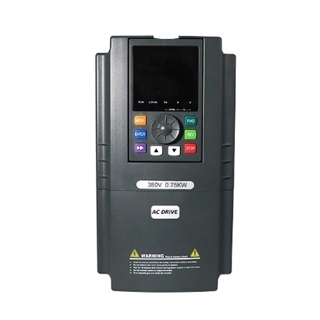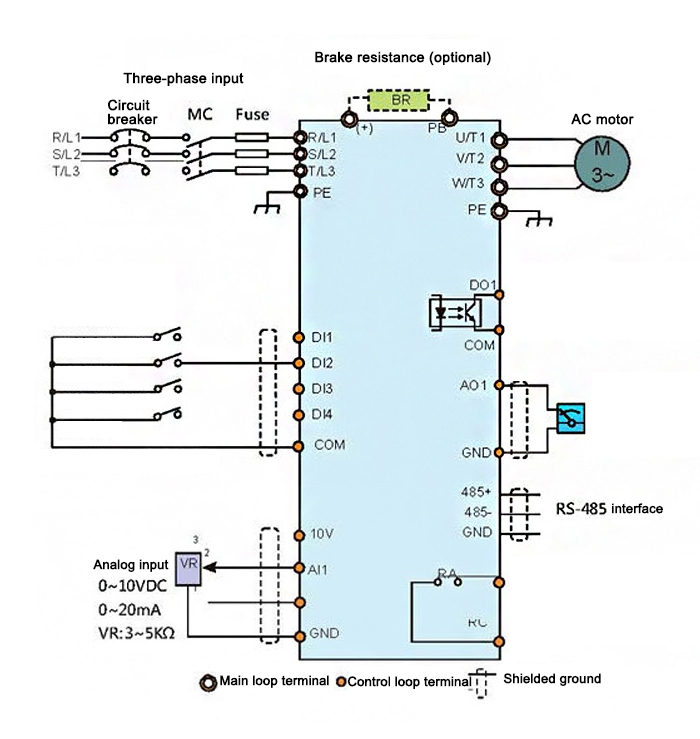In the dynamic realm of electrical systems, the choice between a single-phase inverter and a three-phase inverter plays a pivotal role in determining the efficiency, stability, and overall performance of various applications. This blog post delves into the key differences between these two types of inverters, shedding light on their applications, power characteristics, and other critical factors that influence their suitability in different settings.

Single-phase and three-phase inverters are devices used in electrical systems to convert direct current (DC) into alternating current (AC). Here are the key differences between single-phase and three-phase inverters:
Number of Phases
Single-phase inverter: This type of inverter produces a single alternating current (AC) waveform, oscillating between positive and negative values. It is characterized by a single hot wire and a neutral wire in the output.
Three-phase inverter: In contrast, a three-phase inverter generates three separate AC waveforms, each with a phase difference of 120 degrees. The output consists of three hot wires and a neutral wire, forming a more balanced and constant power flow.
Applications
Single-phase inverter: Well-suited for applications with lower power requirements, commonly found in residential settings and small businesses. Single-phase inverters are commonly used to power household appliances, lighting, and small electronic devices. They are also employed in single-phase motors found in various equipment.
Three-phase inverter: Ideally designed for industrial and commercial applications with higher power demands. Three-phase inverters are commonly used in large machinery, motors, and industrial equipment where the balanced power delivery of three phases is essential for efficient operation.
Power Delivery
Single-phase inverter: Delivers power in a single sinusoidal waveform. The power output may experience fluctuations, and voltage imbalances can occur, especially in larger systems. This can result in less stable power delivery, impacting the performance of connected equipment.
Three-phase inverter: Provides a more stable and balanced power delivery. The three separate sinusoidal waveforms, each with a phase difference of 120 degrees, contribute to a smoother power flow. This balanced power delivery is advantageous for applications with higher power requirements and is especially beneficial for three-phase motors, reducing torque fluctuations and improving overall system performance.
Three phase inverter circuit

Voltage and Current Characteristics
Single-phase inverter: The voltage and current waveforms produced by a single-phase inverter exhibit a single peak and zero-crossings per cycle. This means that the power delivery fluctuates between maximum and zero values in a cyclical fashion. In terms of voltage, there is a single sinusoidal waveform, which may result in less consistent power delivery.
Three-phase inverter: Generates three sinusoidal voltage and current waveforms, each offset by 120 degrees. This configuration leads to a smoother and more continuous power delivery. The overlapping of the three phases contributes to a more balanced and efficient use of electrical power.
Efficiency
Single-phase inverter: While single-phase inverters are efficient for lower power applications, they may experience slightly lower efficiency at higher power levels. Efficiency can be influenced by factors such as the design of the inverter, the load it is driving, and the overall power system.
Three-phase inverter: Generally offers higher efficiency, especially at higher power levels. The balanced power delivery and reduced transmission losses in three-phase systems contribute to overall improved efficiency. This makes three-phase inverters well-suited for industrial applications with larger power demands.
Motor Types
Single-phase inverter: Typically used with single-phase motors, which are common in household appliances, small machinery, and certain commercial applications. Single-phase motors are characterized by their simplicity and cost-effectiveness, making them suitable for less demanding tasks.
Three-phase inverter: Specifically designed for three-phase motors, which are prevalent in industrial and commercial settings. Three-phase motors are known for their efficiency, reliability, and ability to handle higher power loads. They are commonly found in industrial machinery, pumps, compressors, and other heavy-duty equipment.
Power Stability
Single-phase inverter: May experience power fluctuations and voltage imbalances, especially in larger systems or under varying loads. The single-phase power delivery can result in less stable power output compared to three-phase systems.
Three-phase inverter: Offers better power stability due to the balanced and continuous power delivery of three phases. The three-phase configuration helps minimize voltage fluctuations and ensures a more constant power supply, which is crucial for the stable operation of industrial machinery and other critical equipment.
Fault Tolerance
Single-phase inverter: Generally, single-phase systems may be more susceptible to voltage sags and power interruptions. In the event of a fault or disturbance, the fault tolerance of a single-phase inverter may be limited, and the impact on connected equipment can be more pronounced.
Three-phase inverter: Offers better fault tolerance. The redundancy provided by three phases enhances the system's resilience against faults. In industrial environments, where continuous operation is critical, three-phase systems can better withstand and recover from faults, ensuring more reliable performance.
Harmonic Distortion
Single-phase inverter: May introduce higher harmonic distortion into the power system. Harmonic distortion refers to the presence of frequencies that are multiples of the fundamental frequency. Higher harmonic distortion can affect the performance of sensitive electronic equipment and lead to increased energy losses in the system.
Three-phase inverter: Tends to have lower harmonic distortion. The balanced nature of three-phase power distribution helps mitigate harmonic issues, contributing to a cleaner and more stable power output. This is particularly important in industrial environments where the precision operation of machinery and equipment is crucial.
For more information, please visit inverter.com.
